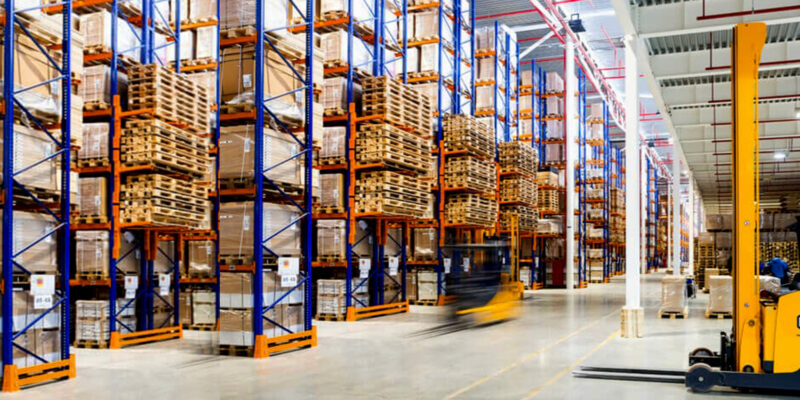Over the years, storage facilities have evolved—modern methods, techniques, and equipment have increased warehouse productivity exponentially. Material shifting equipment of various types and capacities like forklift trucks, reach trucks, battery-operated pallet trucks, etc., offer the opportunity to improvise and enhance warehouse efficiency and agility.
Efficient warehouse management starts with effective storage.
Warehouses are often limited by space, as a result, stocks can easily exceed the maximum capacity and limit the capabilities. In such cases, adopting a narrow aisle arrangement is the optimal solution as it allows us to increase the inventory size and improves better space utilization. Using tall racks and managing narrow aisles is one of the most effective techniques to utilize the space efficiently.
Forklift trucks may not be suitable in such warehouse environments. Reach trucks on the other hand have a smaller size and turning radius making them the most efficient equipment for such narrow spaces.
Reach trucks are usually a better fit for work in such an environment, they are usually considered to be an aggregator of productivity and efficiency. Using it for your material shifting needs can offer up to 30% more space in the same area, enabling increased storage capacity and better space utilization. It is also easier to navigate while working in narrow mezzanines.
There are many such benefits of using reach trucks for narrow aisles, some of which are listed below.
Small and Safe Operations
Narrow aisles are challenging to navigate through and even the most experienced operators can err while maneuvering a forklift. The tiniest error may lead to operational concerns, leading to accidents, injuries, and damage to humans and goods.
A reach truck on the other hand is designed specifically to perform optimally in narrow spaces. It has a smaller turning radius and smaller wheels making it highly maneuverable and agile in narrow aisles. Using reach trucks in such environments can help reduce the chances of accidents and mitigate the risks associated with larger forklift trucks.
Additionally, such warehousing facilities need reach trucks only to perform a specific set of tasks.
Despite being able to perform most of the tasks that other larger forklifts can accomplish, reach trucks are useful in specific applications. They are easier to maneuver and operators can easily be trained to handle one in such a case. In an environment with narrow aisles, these trucks offer an agile, safe, and optimal solution to improve the overall efficiency and productivity of the warehousing facility.


